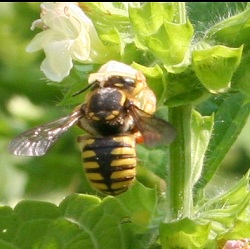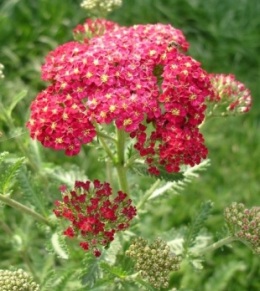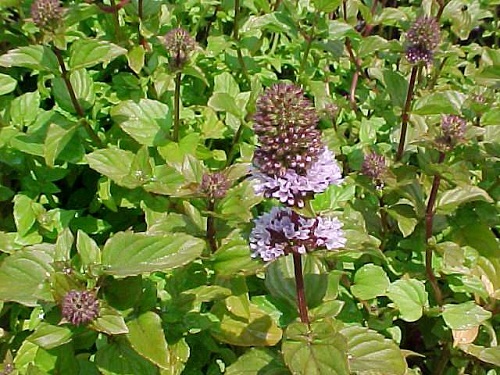
Save time and money by stocking your backyard or windowsill gardens with five basic medicinal herbs. These superstars will treat common ailments such as colds and flu, inflammation, minor cuts, infections, pain, muscle spasms, anxiety, poor digestion and insomnia. Every medicinal herb garden should include chamomile, yarrow, lemon balm, Echinacea and peppermint. These five basics are safe and effective for the vast majority of people when used as simple teas, poultices or salves.
Echinacea: Super Immune-Booster
Echinacea products are among the top-selling herbs in health-food stores. Many gardeners know this group collectively as purple coneflower (Echinacea purpurea), but echinacea has emerged as the most widely used common name.
The seeds of E. purpurea germinate readily, or plants can be easily propagated by dividing the roots. This species does well in any well-drained soil, will tolerate up to half shade, and is remarkably drought-resistant. Plants and seeds of E. augustifolia are harder to find, and the seeds germinate much less readily.
While most references suggest using Echinacea root for medicinal use, I make a tea of the fresh or dried flowers of E. purpurea: the chemical constituents of the flowers are similar to those of the root. In summer or fall, I simply pour a cup of boiling water over a chopped flower head and steep it, uncovered, for 10 minutes. For winter use, I make a tincture. I chop an entire plant, place it in a wide-mouthed gallon jar, and pour in around 750 ml (26 oz, or 3.17 cups) of 190-proof grain alcohol (never wood or rubbing alcohol) and a quart of water – just enough to cover the plant material. I put on the lid and set the jar aside for two weeks. After this, the tincture is ready to use. It will retain its effectiveness for at least a year. I swallow about 30-60 drops (1-2 teaspoons) of the tincture four or five times a day when I feel a cold coming on.
Chamomile: Gentle Yet Powerful
 Most chamomile tea is made from the dried or fresh flowers of the annual German or Hungarian chamomile (Matricaria recutita, formerly M. chamomilla or Chamomilla recutita). Roman or English chamomile, the flower of the perennial Chamaemelum nobile, is also commonly grown in herb gardens. All can be used interchangeably.
Most chamomile tea is made from the dried or fresh flowers of the annual German or Hungarian chamomile (Matricaria recutita, formerly M. chamomilla or Chamomilla recutita). Roman or English chamomile, the flower of the perennial Chamaemelum nobile, is also commonly grown in herb gardens. All can be used interchangeably.People have used chamomile tea for centuries as a gentle sleep aid (particularly for children), as well as to ease digestion, promote urination and relieve colic. The also used chamomile tea to wash wounds and sores. Today, the pharmacopoeias (official authorities) of 26 countries approve it to treat inflammation, infection, colic, muscle spasms and tension. All uses except sedative claims have been confirmed by recent research.
German chamomile is easily grown from seed. The daisylike flowers usually appear within six weeks of planting. It does best in cooler climates; in the South it quickly bolts and shrivels under the intense summer sun. German chamomile likes a neutral to slightly acidic, well-drained sandy loam and full sun. Plants self-sow freely, so you’ll probably not need to plant it again after the first season. During the several weeks in which chamomile blooms, you can make several pickings. Spread the flowers in a basket in a warm, dark place to dry.
To make tea, just pour one cup of boiling water over one heaping teaspoon of dried flowers. Steep covered for ten minutes then strain into a cup. Sip a cup of tea 3-4 times a day to relieve an upset stomach or have a cup to relax before going to bed.
NOTE: Those allergic to the pollen of other aster family members such as ragweed may also be allergic to chamomile.
Yarrow: First Aid in the Garden
Color variations include white, purple, pink, orange, yellow, and tan
Nearly all yarrows require no care, remain pest-free and are winter-hardy in Zones 3 thru 9, blooming June thru September. Plants are easily grown from seed or propagated by dividing the roots in the spring or fall. Yarrow adapts well to many soil types but thrives in moderately rich soil in full sun. Harvest the stalks when in full bloom and hang to dry.
Minor cuts should first be washed thoroughly since yarrow doesn’t inhibit bacterial growth. Crush leaves or flowers and apply to cut.
To make tea, pour a cup of boiling water over 1-2 teaspoons of the dried herb and steep, covered, for 10-15 minutes.
Lemon Balm: A Tasty Healer
 Lemon balm (Melissa officinalis) is a favorite of bees as its generic name attests: Melissa is Greek for “bee.” Traditionally, lemon balm has been used to reduce fevers and treat colds by inducing sweating, calm the digestive tract, relieve spasms related to cramps and headaches, and overcome insomnia. Recent research confirms the plant’s ability to calm anxiety, relieve spasms and inhibit the growth of fungi and bacteria.
Lemon balm (Melissa officinalis) is a favorite of bees as its generic name attests: Melissa is Greek for “bee.” Traditionally, lemon balm has been used to reduce fevers and treat colds by inducing sweating, calm the digestive tract, relieve spasms related to cramps and headaches, and overcome insomnia. Recent research confirms the plant’s ability to calm anxiety, relieve spasms and inhibit the growth of fungi and bacteria.Reaching two feet in height, lemon balm is easy to grow from seeds sown in the spring or early fall. It is hardy in Zones 4 thru 9. A fertile, moist soil is ideal with a wide range of acidity – from pH 5 to 7.8. It likes a cool habitat, grown under shade. It can be invasive, so prune the flowering tops before they go to seed.
It is most effective when used fresh or freshly dried. Use 1-2 teaspoons per cup of boiling water, steeping for 10 minutes.
Peppermint: Spicy-Sweet, Digestive Aid
Mint is mentioned in the Ebers Papyrus, the world’s oldest surviving medical text, believed to date from the 16th century B.C.E. Peppermint (Mentha x piperita) is actually a sterile hybrid of spearmint (M. spicata) and water mint (M. aquatica).
Traditionally used to ally insomnia, upset stomach, indigestion, nervous tension, colds, cramps, diarrhea and nausea, recent research has shown that the essential oil contains substances that relieve muscle spasms and inhibit the growth of bacteria and viruses. Its primary constituent – menthol – gives this hardy perennial herb its spicy-sweet scent and flavor.
Grow mints in containers as they can be highly invasive. Since you can’t grow plants from its sterile seeds, you can increase your stock by dividing the roots. Plant in moist, but well-drained soil and full sun. Harvest leaves as soon as they mature and dry them in a warm, dark place.
One teaspoon per cup of boiling water makes a delicious and refreshing tea, up to three times a day to aid digestion
NOTE: People prone to gastric reflux should not drink peppermint tea, as it relaxes the esophageal sphincter, allowing gastric juices to flow into the esophagus, possibly irritating it and/or causing inflammation.
By Steven Foster
The Herb Companion
Read the full article, with historical backgrounds, in the May 2011 issue of The Herb Companion.




No comments:
Post a Comment